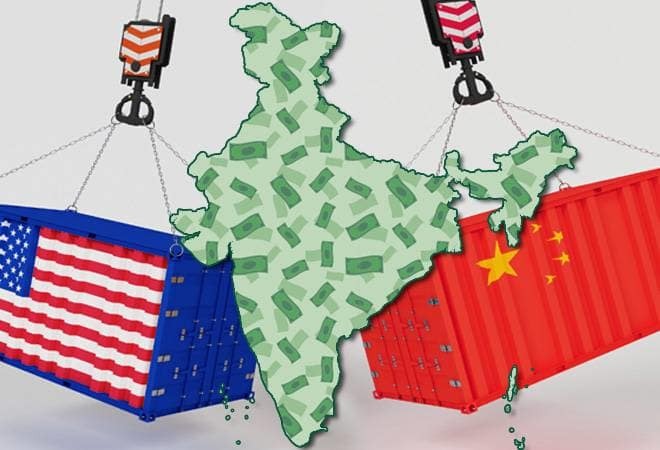
The relations between the world’s largest democracy and the oldest, India and the USA, has a fractured history and has largely been conditioned by the larger dynamics of global politics. India’s emergence as an independent country after centuries of colonial domination coincided with the beginning of the consolidation of America as the undisputed hegemonic power in the West, followed by a period of, open but restricted, the rivalry between USA and USSR in the form of the Cold War. The structural realities of international politics reinforced by their contrasting worldviews placed Washington and New Delhi in antagonistic positions in the evolving order. Nevertheless, there were indications of periodic overtures from both ends for a positive relation to serving their respective national interest. Geographically, the Indian peninsula protrudes into the strategically important Indian Ocean, it has a population which comprises a substantial youth population, professes democratic values – all of which make it an indispensable partner uniquely positioned to wield extended influence to the US.
Foreign policy must be understood as a sequence of moves, much like the game of chess, influenced heavily by externalities. To better understand this, a look at the Sino-India conflict of 1962 could be helpful, which albeit under unfortunate circumstances, pushed India towards the US and somewhat altered the course of India’s foreign policy. When China attacked India, the Soviets responded with ambiguity, refraining from overt support, forcing Nehru to reach out to the US President Kennedy urging air support and extra equipment. The subsequent unfolding of relations took a dramatically different turn when relations between US and China improved during Nixon administration, and this rapprochement became the most acute exemplification of how US-India ties got frustrated by externalities during the Cold War. Subsequently, India’s nuclear weapons program and a peaceful nuclear explosion in 1974 led to a bilateral altercation which only served to strengthen the US-China alignment against India
Any conceptualization of the reformulation of the international order cannot ignore China. The emergence of China as a global power challenges both the United States and India in different, but complementary ways. China’s emergence as a global power is worrisome to the US, which wants to retain its hegemonic position as a superpower. China’s pre-eminence is equally dangerous to India, as China’s rise is altering the regional balance of power at the expense of India’s ambition to be a great power. These objective conditions, when the US’ global challenges coincided with India’s regional problems, laid the fertile ground for Indo-US cooperation in balancing the “peaceful rise of China”.
With the Bush administration assuming office in 2000, China was named its “strategic competitor”. Contrarily, there were clear signs for building close strategic partnerships with India. In 2005, the Bush administration took the unprecedented step of preparing a civilian nuclear agreement with India, a non-signatory of the non-proliferation treaty (NPT), as India evinced commitment that such capabilities would be used for civilian purposes only and would be kept under IAEA (International Atomic Energy Agency) observation. More recently, the US Indo-Pacific policy and the subsequent renaming of the US Pacific Command to Indo-Pacific command seeks to draw India further into the US strategic fold. Furthermore, support from the US would legitimize India’s entrance on the world stage.
The geopolitical reality of today shows that China is and will remain India’s major potential threat in Asia, be it economic, security or defense. Even though there has been a great increase in bilateral trade, the two Asian giants share a largely uncomfortable relationship and harbor deep suspicion over each other’s strategic intentions. Historically, Nehru’s trust in China cost India dearly, and the successive governments have been particularly careful to avoid the same mistake. It would not be an exaggeration to say that China is threatened by Indo-US closeness, among other things, its defense budget has quadrupled since 2000, replacing India as the second largest defense spender in Asia in 2001.
Lastly, one has to look at the reality of Southeast Asia, where ASEAN countries are viewing China’s economic and strategic assertiveness, especially in the South China Sea, as a threat to regional peace but have been unable to voice such concerns. As such, the reason presents a geopolitical space for offsetting Chinese preponderance which India should seek to fill with its ‘Act East’ policy. Smaller ASEAN countries are looking towards outside powers, and India-US partnership in the Indo-Pacific region could provide a strong alternative to dependence on China.
We must acknowledge that both India and US are transitioning to new roles in the international system, where the former is looking for a greater say in managing global problems while the latter, which has been accustomed to leading alone, is looking to expand the regional role and preserve its interests more effectively. Engagement between India and US is hence inevitable, and balancing China’s rise in the international system, more specifically in the Indo-Pacific, will be a clear strategic by-product of the same.
*** The author is a postgraduate student of Political Science, with specialisation in International Relations, Jadavpur University, India. Her research interests include South Asian politics, specifically Indian foreign policy. ***
![]()

